Table of contents
Is brown rice whole grain rice? Whole grain rice or brown rice ( Oryza sativa ) is unpeeled rice ( raw, organic ) where only the husks of the rice grains have been removed after harvesting. Vitamins, minerals and fiber are retained in the outer layers of the whole rice . This is why brown rice is more nutritious than white rice. 1
Using wholegrain rice in the kitchen:
What is wholegrain rice? Classic wholegrain rice or brown rice is dehulled rice that still contains silver skin and germ. The color of the rice grains is different to that of white rice : they are slightly cloudy, almost brownish; occasionally there are also greenish-looking grains. Cooked wholegrain rice is firmer, tastes slightly nutty, more intense and stronger than white rice. However, the consistency differs depending on the variety: short-grain or medium-grain wholegrain rice is stickier or mushy than, for example, long-grain wholegrain rice . The further use should therefore be adapted accordingly.
Cooked brown rice is ideal as a side dish for stews, curries, vegetable casseroles, steamed vegetables (wok) or soups (garnish). Recipe suggestions such as brown rice in a vegetable pan, fried wholegrain rice or wholegrain risotto are also suitable as a main course. You can also use cooked wholegrain rice to create vegetable fritters, a rice salad or unusual desserts. To reduce the intense taste of brown rice a little, you can also prepare it together with white rice.
Sprouted wholegrain rice is ideal as a raw food in salads, in muesli, on bread, for (raw) soups or stews. We'll write more about sprouting below.
Arrack is a brandy made from fermented rice mash. Rice is also used to make rice vinegar, rice milk, rice beer and sake (rice wine). 24
Recipe for vegan wholegrain rice risotto with mushrooms and kale:
Ingredients (for 4 people): 250 g wholegrain rice (raw, organic), 300 g kale, 250 g mushrooms of your choice (e.g. button mushrooms, oyster mushrooms ), 1 onion, 4 cloves of garlic, 1 tbsp rapeseed oil, 750 ml vegetable stock, 100 ml oat cream, 50 g almond flakes, 2 tbsp yeast flakes, salt andpepper .
Preparation: Soak the wholegrain rice overnight or for a few hours, then rinse again with fresh water and drain. Clean the mushrooms and cut into bite-sized pieces. Wash and chop the kale. Peel the onions and garlic cloves, chop finely and sauté with a little rapeseed oil until translucent. Add the mushrooms and fry for 5-10 minutes. Now add the wholegrain rice, bring to the boil with the vegetable stock and simmer for about 30 minutes over medium heat with the lid half closed. Stir occasionally so that the rice does not burn. Add the oat cream and kale as soon as the rice has absorbed about ¾ of the vegetable stock. Add most of the almond slivers, season with salt and pepper and add more vegetable stock if necessary. Let the risotto simmer for at least another 15 minutes (until the wholegrain rice is soft). Finally, stir in the yeast flakes, serve the vegan risotto on plates and decorate with almond flakes. Hemp seeds are a healthier topping.
Vegan recipes with whole grain rice (raw) can be found under the note: " Recipes that have the most of this ingredient ".
| Not only vegans or vegetarians should read this: Vegans often eat unhealthily. Avoidable nutritional errors . |
Shopping - where to buy wholegrain rice (natural rice)?
Supermarkets such as Coop, Migros, Denner, Volg, Spar, Aldi, Lidl, Rewe, Edeka, Hofer etc. offer at least one type of wholegrain rice (raw), well-stocked supermarkets often have various types of natural rice, including organic ones. In organic supermarkets (e.g. Alnatura and Denn's Biomarkt ), organic shops, health food stores, delicatessens and online shops you will find a larger selection of wholegrain rice (organic). Untreated rice is preferable to conventional rice.
Fragrant rice (such as basmati rice and jasmine rice ) is also available as unpeeled rice, and special types of rice such as mochi rice or black rice are considered whole grain rice anyway.
Making your own wholegrain rice:
Cooking brown rice / cooking wholegrain rice: First, you have to soak the rice overnight (approx. 12 hours). The rice should be covered with at least 2 cm of water. After soaking the brown rice, pour off the water and wash the wholegrain rice with fresh water until the water remains clear. Soaking breaks down some of the phytic acid contained in the wholegrain rice and also reduces any existing impurities, pollutants or difficult-to-digest polysaccharides.
The water method is best for cargo rice. This means that you cook the rice with a higher water-rice ratio than with the soaking method. This can further reduce any harmful substances it contains (eg arsenic). 12 After soaking, cook the brown rice in five times the amount of water. How long should you cook wholegrain rice? The cooking time for brown rice is around 45-60 minutes. After 30 minutes, reduce the heat and let the rice steep for at least 15 minutes. Pour off any excess water. Wholegrain rice always remains a little firmer and grainier in consistency than white rice.
Germinate wholegrain rice: Can you germinate rice? Wholegrain rice is unpeeled rice and can therefore still germinate raw and be eaten raw - provided the grains are whole and undamaged. Germinated brown rice is also known as GABA rice. GABA stands for 'gamma-aminobutyric acid' (γ-aminobutyric acid), a messenger substance of the nervous system, a neurotransmitter that the body also produces itself. Germinated wholegrain rice is said to contain a particularly high amount of it. Half-raw rice can be germinated in two different ways: 5
- Warm water method: Soak brown rice in warm water for 4-20 hours. It is important that the temperature is constant between 30 and 40 °C and that the water is changed every 3-4 hours. This prevents fermentation and avoids unpleasant smells. Then pour off the soaking water and keep the rice moist for 20-24 hours by rinsing the whole rice well every few hours. With a little practice, keeping it warm also works on the stove, in the oven, in the yoghurt maker, in the rice cooker (depends on the model) or in special germination devices. The GABA content is said to be highest with the warm water method after 21 hours of germination.
- Cold water method: No electricity is required here, but it does take more time. Soak the washed wholegrain rice in three times the amount of water and leave it, covered with a cloth, to swell at room temperature for around 12 hours. Then pour off the water, rinse the rice well and put the soaked rice in a sprouting jar. Tilt the jar in a bright place and rinse the rice grains well at least twice a day. The grains begin to germinate after two to three days. In this form they are soft enough and can therefore be eaten raw. Never let rice germinate for longer than three to four days, because after that valuable nutrients are lost and bacteria and fungi spread.
Germination also works in a germination tray, in a sprout tower (sprout garden) or with a simple sieve.
Storage (unhulled rice):
Raw wholegrain rice or brown rice lasts for about a year when stored in a dark, cool and, above all, dry place. Hulled, white rice lasts a little longer because it lacks a shell (as well as the aleurone layer and germ), which encourage rancidity. Do not store wholegrain rice next to foods with strong odors such as spices, coffee, tea or chocolate, as the rice will otherwise take on their smell.
Cooked cargo rice can be stored in the refrigerator for up to two days or frozen in portions. When reheating, make sure it is heated correctly (> 70°C) so that any bacteria that may occur (e.g. Bacillus cereus ) are largely killed. 26
Ingredients - Wholegrain rice nutritional values - Calories:
The energy content of wholegrain rice is 363 kcal per 100 g, which comes mainly from carbohydrates (76%). The 4.6% fiber it contains is higher than in white long-grain rice (1.3%). With 7.2% protein, wholegrain rice is rather low in protein compared to other types of grain such as oats (17%). At 2.8%, it contains slightly more fat than in white long-grain rice (0.66%). 2
50 g of wholegrain rice covers 100% of the daily manganese requirement. The manganese content of wholegrain rice is 4 mg/100g, which can be compared to that of wholegrain wheat flour and macadamia nuts . The trace element manganese is greatly reduced by peeling (white long-grain rice: 1.1 mg/100g) and cooking ( wholegrain rice, long-grain, cooked : 0.97 mg/100g). Chickpeas (raw) have high values at 2 mg/100g, but cooked they only contain around 1 mg/100g. 2 Manganese is important for the formation of cartilage tissue, among other things. 3
Whole grain rice contains 0.74 mg of vitamin B6 (pyridoxine ) per 100 g, which is 53% of the daily requirement, similar to sesame seeds . White long grain rice has only 0.16 mg/100g of this B vitamin. With 1.7 mg/100g of pyridoxine, raw pistachios cover over 100% of the daily requirement. 2 Pyridoxine is essential for a functioning nervous, immune and hormonal system and plays an important role in the metabolic processes of proteins, lipids and carbohydrates. 4
100 g of brown rice contains 337 mg of phosphorus (48% of the daily requirement). Rye grains and raw buckwheat contain a similar amount of phosphorus. Wheat bran contains a particularly high amount of this element, at 1,013 mg/100g. 2 Phosphorus is important for energy production. However, many people consume too much phosphorus due to the high levels of phosphoric acid in ready-made products and soft drinks. 6
Note : The exact nutritional values of wholegrain rice depend on the type of wholegrain rice and the growing conditions (including the iron content). However, wholegrain rice generally contains more vitamins and nutrients than hulled white rice. This is because most of the nutrients are found in the germ and silver skin that are still present in wholegrain rice.
The complete ingredients of raw whole grain rice, the coverage of the daily requirement and comparison values with other ingredients can be found in our nutrient tables. In the article Nutrients explained you will get a detailed insight into the topic.
Health aspects - effects:
Is whole rice healthy? Brown rice is considered healthier than white rice because it is less processed. Brown rice keeps you full for longer because the human body digests the high proportion of complex carbohydrates more slowly. The slightly astringent effect of rice can help to rebuild the intestinal mucous membranes after a gastro-intestinal or colon inflammation. 7
In addition to fiber, the outer layers of the rice grains also contain important secondary plant substances, such as phytic acid. Phytic acid binds minerals from food, but it also has an antioxidant effect and has a preventive effect against colon cancer. 8 Read more about this in the article Phytic acid or phytate and soaking or sprouting .
The bioactive components of germinated brown rice, such as ferulic acid, γ-oryzanol and γ-aminobutyric acid, contribute to the prevention of chronic diseases such as cancer, diabetes, cardiovascular disease and Alzheimer's disease. 9 This GABA rice is considered a 'superfood', especially in Japan (known there as 'Hatsuga Genmai', which means germinated brown rice).
Brown rice is gluten-free and therefore suitable for people who suffer from gluten sensitivity, gluten intolerance or celiac disease. 7 Look for warnings on the packaging about foreign traces or a symbol for 'gluten-free', such as the crossed-out ear of corn.
Wholegrain rice has a lower glycemic index (GI) than white rice, which means that blood sugar levels do not rise as quickly. If you eat white rice frequently, the risk of developing type 2 diabetes increases, which a study confirms specifically in the Asian population. 10 On the other hand, replacing white rice with wholegrain products such as brown rice is said to reduce the risk of developing diabetes. 27 You can find out more about this topic in the article Plant-based diet can prevent or cure type 2 diabetes .
Dangers - Intolerances - Side effects:
The groundwater used for rice cultivation in some growing regions is heavily contaminated with heavy metals such as arsenic and cadmium due to the use of fertilizers and pesticides. Regular intake of small amounts of inorganic arsenic can lead to skin changes, vascular and kidney damage and cardiovascular diseases. Inorganic arsenic is also teratogenic and is considered carcinogenic. 11,12
The proportion of arsenic compounds varies depending on the region, cultivation method and type of rice. Such compounds accumulate mainly in the outer layers of the rice grain, which is why wholegrain rice is more heavily contaminated than white rice. By soaking, washing and cooking wholegrain rice in plenty of water, existing pollutants can be reduced (= arsenic in the rice is removed). 12 Rice products such as rice cakes, rice flakes or rice drinks can also be contaminated with inorganic arsenic. Small children absorb arsenic more easily than adults, which is why small children (0-3 years) should not be fed primarily rice and rice products. 13 An EU regulation now regulates the maximum levels of arsenic in rice and rice products. 16
Folk medicine - natural medicine:
In traditional Chinese medicine ( TCM ), a tried and tested rice soup (congee) is said to provide relief for gastrointestinal complaints, kidney problems and allergies. In China, the soup is eaten as a preventative measure and mainly for breakfast. It is used in a fasting cure (unsalted) for detoxification and drainage. 14
Occurrence - origin - ecology:
The origin of the rice plant is thought to be in Southeast Asia, where remains of wild rice ( Oryza rufipogon ), the ancestor of cultivated rice ( Oryza sativa ), were found. Three different domestication centers are known: Asia, South America and Africa. Humans have probably been cultivating rice for 6,000 to 7,000 years. 15 It can also be assumed that people ate mainly whole grain rice at that time. The processes of peeling and polishing the rice grains to produce white rice were invented much later.
The main rice-growing region is Asia (especially China, India and Southeast Asia 17 ), where around 90% of the world's harvest is produced. 15 Due to the warm, humid climate, Latin America, some southern states of the USA, areas in Africa and Australia are also well suited to rice cultivation. There is also European rice from Italy, France, Portugal and Spain. 18
Cultivation - Harvest:
Rice is not actually an aquatic plant. Through breeding and natural selection, rice has developed a ventilation system (aerenchyma) for the roots to adapt to the moist growing conditions. Rice is cultivated in different ways depending on the prevailing ecosystem: 18,29
Water rice cultivation, also known as wet rice cultivation or deep water cultivation, accounts for about 75-80 % of the world's rice crop. The amount of water used is very high.29 Before planting, farmers compact the soil to minimize nutrient leaching. They then sow directly or, more commonly, plant pre-grown seedlings (usually by hand) on very wet soil and then flood the fields. This reduces pest infestation and weeds. Shortly before harvest, rice farmers drain the water and harvest the ripe rice by hand or with combine harvesters.31 One form of wet rice cultivation is terrace farming . Here, an ingenious system of bamboo canes, canals, and small ditches distributes the water evenly from the top to the bottom terrace. Wet rice can be harvested one to three times a year, depending on the variety, type of cultivation, and growing area. 18,19
Dry rice cultivation is divided into rain-dependent mountain rice cultivation and lowland rice cultivation . These methods are found in regions with little rainfall or in mountains with high humidity (up to 2,000 m above sea level). A rice subspecies that is not adapted to flooding is used for cultivation. The complex and labor-intensive weed and pest control results in significantly lower yields than with wet rice cultivation. Due to its more intense aroma and the high effort involved, this rice is available at higher prices. 18,19
The rice is harvested after the panicles have turned yellow or brown. Manual harvesting is the most common method. Farmers use sickles to harvest the ripe rice and tie the panicles together to form sheaves. With manual harvesting, there are a few days between harvesting and threshing so that the rice can dry. With mechanical harvesting, combine harvesters usually cut off the ripe panicles and thresh them automatically. Cleaning and drying is necessary for both harvesting methods, 28 as the moisture content for storable natural rice is max. 15-16% (3-6 months) or 12% (longer storage). 31
This almost unprocessed rice is called raw rice or paddy rice. The germinable rice grain is not yet suitable for consumption, but it is suitable for sowing or as bird feed. By removing the hard, woody, silica-containing husks, you get half-raw rice (whole grain rice, brown rice). It also contains the germ, which is rich in vital nutrients, as well as the silver skin and is very filling due to the high fiber content. When brown rice is further processed, white, polished rice is produced. The germ and the silver skin are removed by grinding and the rough rice surface is then smoothed and polished so that the rice does not stick together too much when cooked. 20
Another processing method is the production of parboiled rice ('partially boiled'). By placing the rice in warm water and then treating it with high pressure, the water-soluble ingredients (vitamins and minerals) dissolve from the outer layers of the paddy rice grains and are partly stored inside. Treatment with hot steam hardens the rice starch on the surface in order to keep the nutrients in the rice grain. This is why parboiled rice, which is peeled and polished after drying, is referred to as a healthier alternative to white rice. 31 However, parboiled rice contains significantly less fiber than brown rice. 21
Ecological aspects:
According to the IRRI Rice Knowledge Bank, wet rice cultivation requires around 1,432 litres of running rain or river water 29 for 1 kg of rice (higher figures are also in circulation, depending on the cultivation region and the overall factors taken into account: 2,500 30 or 3,000-5,000 litres 18 ). If well water is used, the groundwater level also drops, which is problematic for the population. The flow rate of the water must be just right. Stagnant water leads to severe algae formation, while water that flows too quickly wears away the soil and leads to undesirable soil erosion. Wet cultivation creates an anaerobic (oxygen-free) environment in the soil, which promotes the settlement of methane-producing bacteria (archaebacteria). Wet rice cultivation produces up to 25% of the world's climate-damaging methane, i.e. around 100 million tonnes annually. If the fields are left to dry occasionally, methane emissions can be reduced somewhat. Research into this and other fertilization systems is under development. 18,29 Therefore, dry rice cultivation is much more gentle on the climate and the environment. 22
Whole grain rice is grown both conventionally and organically. In organic farming, chemical-synthetic pesticides and artificial, mineral, easily soluble fertilizers are prohibited. This protects the soil from nitrogen over-fertilization and the associated loss of quality. Organic farming reduces the leaching of these pesticides from the soil into nearby biotopes and bodies of water, where they have a negative impact on the ecosystem and its inhabitants. 23
Possibility of confusion:
Due to its brownish color, whole grain rice can be confused with wild rice or water rice (genus Zizania ). However, the grains of wild rice are much darker, longer and narrower than the grains of brown rice.
General information:
Rice belongs to the grass family (Poaceae) and the genus Oryza . Rice is divided into the subgroups long grain rice ( Oryza sativa ssp. indica ) and short grain rice ( Oryza sativa ssp. japonica ), which differ mainly in their content of soluble starch (amylose) and insoluble starch (amylopectin). Although medium grain rice is basically short grain rice, there is the additional category Oryza sativa ssp. javanica. 18 Glutinous rice is also sometimes classified as a separate variety due to its special sticky properties: Oryza sativa var. glutinosa.
Rice is one of the world's most important crops and is the staple food for almost half of the world's population. 15 Over 120,000 varieties of rice are now known. 18
Alternative names of whole grain rice:
Whole grain rice (wholemeal rice, whole grain rice) is also known as natural rice (natural rice), natural grain rice, cargo rice (cargo rice), whole rice, whole grain rice, brown rice, half-raw rice, unhusked rice (unhusked rice) and integral rice (integral rice).
In English, whole grain rice is called brown rice, unpolished rice and whole grain rice (whole-grain rice). Raw rice is called paddy or rough rice.
Key words for use:
Rice processing produces waste products and by-products that are not suitable for human consumption. However, these can be used to produce rice oil, wax and protein-rich feed flour. The husks of rice grains can also be used for building boards and as polishing and fuel. Rice straw is used in livestock farming and as a weaving material for mats, sacks and hats. 25
Rice products are also used in medicine and in the cosmetics industry. In many cultures, rice represents luck, fertility and life. It is therefore integrated into religious ceremonies, for example by throwing raw rice over the bride and groom at weddings.
Literature - Sources:
Bibliography - 31 Sources
| 1. | Saleh ASM, Wang P, Wang N, Yang L, Xiao Z. Brown rice versus white rice: nutritional quality, potential health benefits, development of food products, and preservation technologies. Comprehensive Reviews in Food Science and Food Safety. 2019; 18(4): 1070-1096. |
| 2. | USDA United States Department of Agriculture. |
| 3. | Brodziak-Dopierała B, Kwapuliński J, Sobczyk K, Wiechuła D. The content of manganese and iron in hip joint tissue. J Trace Elem Med Biol. 2013; 27(3): 208-212. |
| 4. | Ahmad I, Mirza T, Qadeer K, Nazim U, Vaid FH. Vitamin B6: deficiency diseases and methods of analysis. Pak J Pharm Sci. 2013; 26(5): 1057-1069. |
| 5. | Sprossen-keimlinge.de Reissprossen - Hatsuga Genmai. |
| 6. | Calvo MS, Moshfegh AJ, Tucker KL. Assessing the health impact of phosphorus in the food supply: issues and considerations. Adv Nutr. 2014; 5(1): 104-113. |
| 7. | Roger JDP. Heilkräfte der Nahrung. Advent-Verlag: Zürich. 2006. 212-215. |
| 8. | Graf E, Eaton JW. Suppression of colonic cancer by dietary phytic acid. Nutrition and Cancer. 1993; 19: 11-19. |
| 9. | Wu F, Yang N, Touré A, Jin Z, Xu X. Germinated brown rice and its role in human health. Critical Reviews in Food Science and Nutrition. 2013; 53(5): 451-463. |
| 10. | Hu EA, Pan A et al. White rice consumption and risk of type 2 diabetes: meta-analysis and systematic review. BMJ. 2012; 344. |
| 11. | Chanpiwat P, Hensawang S, Suwatvitayakorn P, Ponsin M. Risk assessment of bioaccessible arsenic and cadmium exposure through rice consumption in local residents of the Mae Tao Sub-district, Northwestern Thailand. Environ Geochem Health. 2019; 41(1): 343-356. |
| 12. | BfR Bundesinstitut für Risikobewertung. Fragen und Antworten zu Arsengehalt in Reis und Reisprodukten. 2020. |
| 13. | Bayerisches Landesamt für Gesundheit und Lebensmittelsicherheit. Untersuchung von anorganischem Arsen in Kindernahrung - Untersuchungsergebnisse 2010 und 2011. 2012. |
| 14. | Kanmehr M et al. The Effect of G-ORS Along With Rice Soup in the Treatment of Acute Diarrhea in Children: A Single-Blind Randomized Controlled Trial. Nurs Midwifery Stud. 2016; 5: e25852. |
| 15. | Brücher H. Tropische Nutzpflanzen. Ursprung, Evolution und Domestikation. Springer-Verlag Berlin Heidelberg: New York: 1977: 57-68. |
| 16. | Verordnung (EU) 2015/1006 der Europäischen Kommission zur Änderung der Verordnung 1881/2006 hinsichtlich der Höchstgehalte für anorganisches Arsen in Lebensmitteln. |
| 17. | Fao.org Produktionsstatistik der FAO 2019. |
| 18. | Pflanzenforschung.de Weltnahrungspflanze Reis. 2010. |
| 19. | Reishunger.de Reisanbau - wie wächst Reis? |
| 20. | Reishunger.de Reisverarbeitung in der Reismühle. |
| 21. | Blumenthal A., Stransky M. Ernährung und Lebensmittel von A-Z. Editions M, 1. Auflage 1993. |
| 22. | Pini U. Das Bio-Food Handbuch. Ullmann Verlag: Potsdam; 2014: 609-611. |
| 23. | Boelw.de Bund Ökologische Lebensmittelwirtschaft. Was bringt Bio für die Umwelt? |
| 24. | Pagewizz.com Vom Reisöl bis zum Reiswein – Reisgetränke und flüssige Lebensmittel aus Reis. |
| 25. | Rehm S, Espig G. Die Kulturpflanzen der Tropen und Subtropen. Ulmer Eugen Verlag: Stuttgart; 1976. |
| 26. | Ages.at Bacillus cereus. 2020. |
| 27. | Sun Q. White rice, brown rice, and risk of type 2 diabetes in us men and women. Arch Intern Med. 14. Juni 2010;170(11):961. |
| 28. | Reishunger.de Reisernte: Höhepunkt der Saison. |
| 29. | Prasad R, Shivay YS, Kumar D. Current Status, Challenges, and Opportunities in Rice Production. In: Rice Production Worldwide, 2017: 1–32. |
| 30. | Bouman B. How much water does rice use? Rice Today. Jan-March 2009; 8: 28-29. |
| 31. | Riaz M, Ismail T, Akhtar S. Harvesting, Threshing, Processing, and Products of Rice. In: Rice Production Worldwide, 2017: 419–453. |

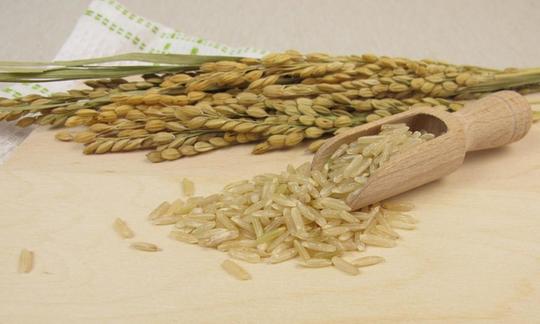

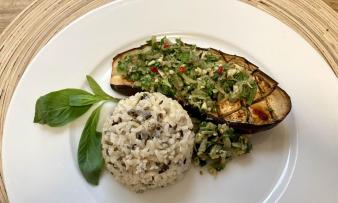
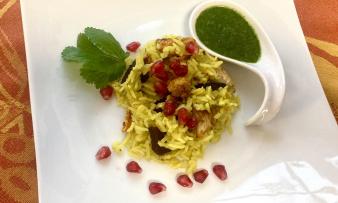
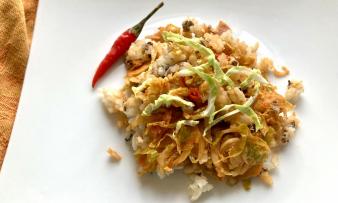


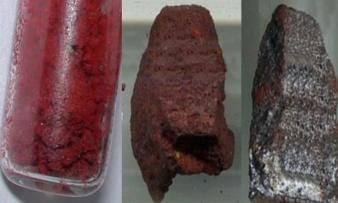


Comments